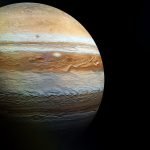Mars, often called the “Red Planet,” is one of the most intriguing planets in our solar system. Known for its reddish appearance and similarities to Earth, Mars has fascinated scientists and space enthusiasts alike. In this post, we will explore what Mars is, its physical features, its orbit, and some interesting facts that highlight its significance.
What is Mars?
Mars is the fourth planet from the Sun and is often referred to as Earth’s “neighbor.” It has captivated humanity’s imagination for centuries due to its unique features and potential for supporting life.
- Size: Mars has a diameter of about 4,212 miles (6,779 kilometers), making it about half the size of Earth.
- Surface: The surface of Mars is rocky and diverse, featuring mountains, valleys, and polar ice caps. The reddish color comes from iron oxide, commonly known as rust.
Mars’s Orbit
Mars orbits the Sun at an average distance of about 142 million miles (228 million kilometers). It takes approximately 687 Earth days to complete one orbit, which means a year on Mars is nearly twice as long as a year on Earth.
- Day Length: A day on Mars (the time it takes for the planet to rotate once on its axis) is about 24.6 hours. This is very similar to an Earth day, making Mars more relatable for potential human exploration.
- Seasons: Mars has seasons similar to Earth due to its axial tilt of about 25 degrees. However, the seasons last about twice as long because of Mars’s longer orbital period.
Unique Features of Mars
Mars has several unique characteristics that set it apart from other planets:
- Thin Atmosphere: Mars has a very thin atmosphere, composed mostly of carbon dioxide (about 95%). This thin atmosphere means there is less protection from solar radiation and extreme temperatures.
- Water Presence: Evidence suggests that liquid water once flowed on Mars, and there are polar ice caps made of water ice. Recent discoveries indicate that there may be briny liquid water present beneath the surface.
- Geological Features: Mars boasts the tallest volcano in the solar system, Olympus Mons, which stands about 13.6 miles (22 kilometers) high, and the largest canyon, Valles Marineris, which is over 2,500 miles (4,000 kilometers) long.
Read This Also: Planet Earth: Our Unique Home in the Solar System
Interesting Facts About Mars
Here are some fascinating facts about Mars that showcase its uniqueness:
- Color: Mars appears red due to iron oxide on its surface, giving it a distinctive color that is visible even from Earth.
- Moons: Mars has two small moons, Phobos and Deimos, which are thought to be captured asteroids from the asteroid belt.
- Dust Storms: Mars experiences massive dust storms that can cover the entire planet for weeks, reducing visibility and affecting temperatures.
- Potential for Life: Scientists are actively searching for signs of past or present life on Mars. The discovery of water and organic molecules has sparked interest in the possibility of microbial life.
- Exploration: Mars has been explored by numerous missions, including rovers like Spirit, Opportunity, Curiosity, and Perseverance, which have provided valuable data about the planet’s geology and climate.
Why is Mars Important?
Studying Mars is crucial for several reasons:
- Understanding Planetary Formation: Mars provides insights into the processes that shaped terrestrial planets and helps scientists understand the history of our solar system.
- Search for Life: Investigating Mars’s past conditions and the presence of water is vital in the search for extraterrestrial life.
- Future Human Exploration: Mars is considered a potential destination for human exploration. Understanding its environment is essential for planning future missions.
Conclusion
Planet Mars, with its unique features and mysteries, is a captivating subject of study in our solar system. Its similarities to Earth and potential for supporting life make it a focal point for scientists and space agencies.
The next time you look up at the night sky and see the bright “Red Planet,” remember that it is not just a distant object but a world full of possibilities and questions. By studying Mars, we enhance our understanding of the universe and our place within it, paving the way for future exploration and discovery. Understanding Mars is essential for the future of space science and our quest to explore beyond Earth.





Pingback: Planet Jupiter: The Giant of Our Solar System - Blogger Bapu